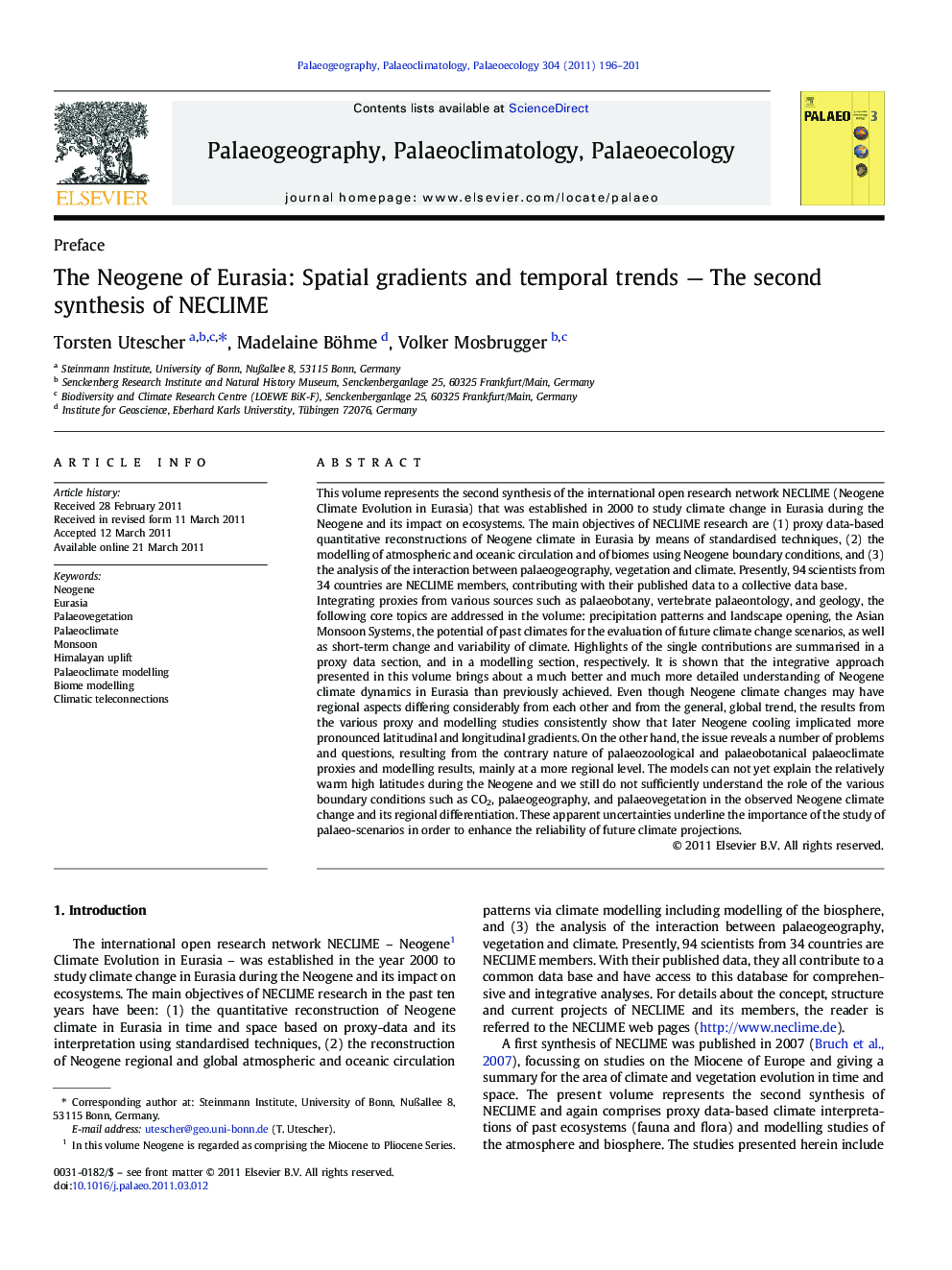| کد مقاله | کد نشریه | سال انتشار | مقاله انگلیسی | نسخه تمام متن |
|---|---|---|---|---|
| 4467270 | 1622257 | 2011 | 6 صفحه PDF | دانلود رایگان |

This volume represents the second synthesis of the international open research network NECLIME (Neogene Climate Evolution in Eurasia) that was established in 2000 to study climate change in Eurasia during the Neogene and its impact on ecosystems. The main objectives of NECLIME research are (1) proxy data-based quantitative reconstructions of Neogene climate in Eurasia by means of standardised techniques, (2) the modelling of atmospheric and oceanic circulation and of biomes using Neogene boundary conditions, and (3) the analysis of the interaction between palaeogeography, vegetation and climate. Presently, 94 scientists from 34 countries are NECLIME members, contributing with their published data to a collective data base.Integrating proxies from various sources such as palaeobotany, vertebrate palaeontology, and geology, the following core topics are addressed in the volume: precipitation patterns and landscape opening, the Asian Monsoon Systems, the potential of past climates for the evaluation of future climate change scenarios, as well as short-term change and variability of climate. Highlights of the single contributions are summarised in a proxy data section, and in a modelling section, respectively. It is shown that the integrative approach presented in this volume brings about a much better and much more detailed understanding of Neogene climate dynamics in Eurasia than previously achieved. Even though Neogene climate changes may have regional aspects differing considerably from each other and from the general, global trend, the results from the various proxy and modelling studies consistently show that later Neogene cooling implicated more pronounced latitudinal and longitudinal gradients. On the other hand, the issue reveals a number of problems and questions, resulting from the contrary nature of palaeozoological and palaeobotanical palaeoclimate proxies and modelling results, mainly at a more regional level. The models can not yet explain the relatively warm high latitudes during the Neogene and we still do not sufficiently understand the role of the various boundary conditions such as CO2, palaeogeography, and palaeovegetation in the observed Neogene climate change and its regional differentiation. These apparent uncertainties underline the importance of the study of palaeo-scenarios in order to enhance the reliability of future climate projections.
Journal: Palaeogeography, Palaeoclimatology, Palaeoecology - Volume 304, Issues 3–4, 1 May 2011, Pages 196–201